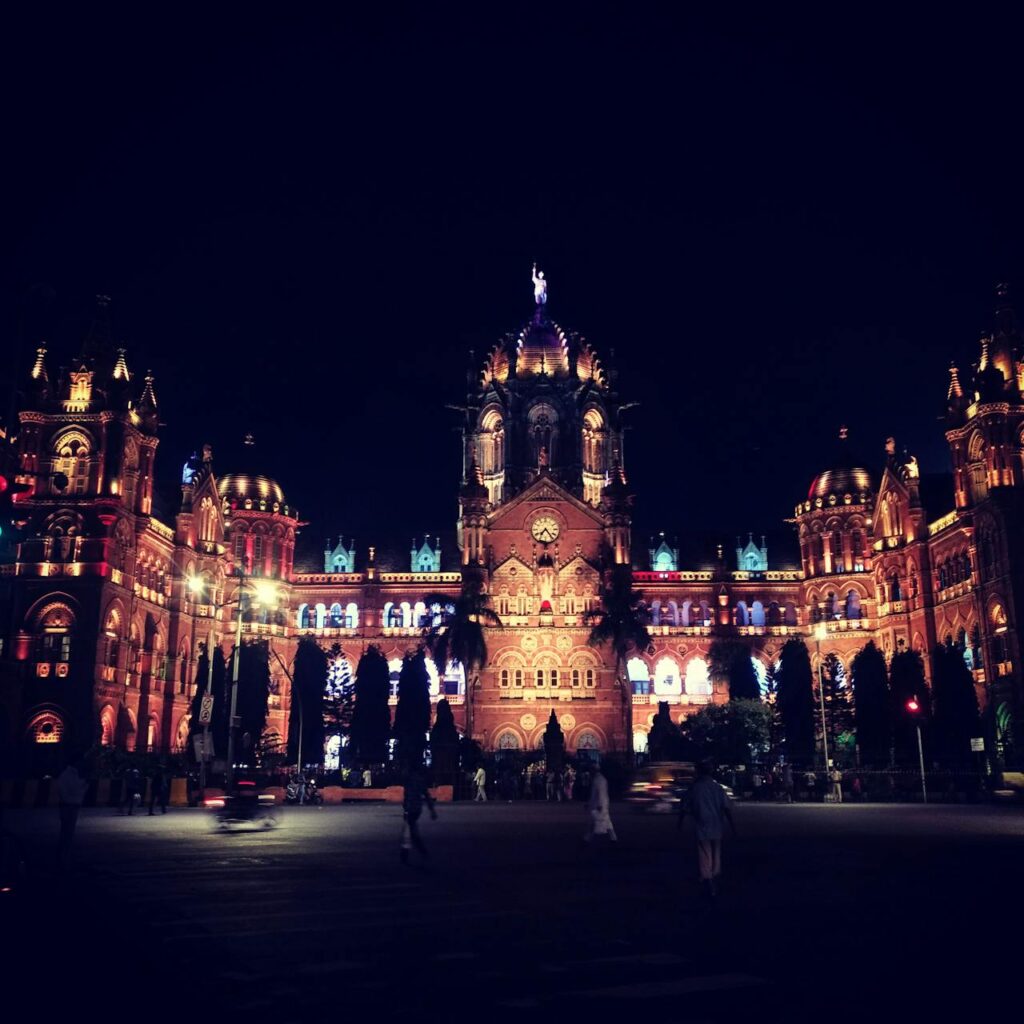Unveiling the city’s hidden charms and Timeless Treasures
Introduction
Mumbai, the bustling heart of India, is a city that never ceases to amaze. Known for its vibrant culture, diverse population, and historical significance, Mumbai offers an endless array of experiences for travelers. From iconic landmarks to hidden gems, the city seamlessly blends its rich history with modern-day allure. Whether you’re here to explore its colonial architecture, indulge in mouthwatering street food, or simply soak in the city’s dynamic energy, Mumbai has something for everyone. In this blog, we’ll dive into three must-visit places in Mumbai that capture the essence of this incredible city.

Places to visit
1.Gateway of India and Colaba

The Gateway of India is not just an architectural marvel; it’s a symbol of Mumbai’s storied past. Constructed in 1924 to commemorate the visit of King George V and Queen Mary to India, this imposing structure stands proudly at the Apollo Bunder waterfront. The Gateway’s Indo-Saracenic design, complete with intricate latticework and large archways, makes it a striking sight against the backdrop of the Arabian Sea. It’s a popular spot for both tourists and locals, who gather to admire the view, take boat rides to the nearby Elephanta Caves, or simply enjoy the vibrant street life around it.
Just a short walk from the Gateway is the lively Colaba district, one of Mumbai’s most eclectic neighborhoods. Colaba is famous for its bustling markets, where you can shop for everything from traditional Indian handicrafts to trendy fashion. The Colaba Causeway is a shopper’s paradise, offering a range of items including jewelry, clothes, antiques, and souvenirs. The area is also home to the iconic Taj Mahal Palace Hotel, a luxurious landmark that has hosted celebrities, dignitaries, and royalty. Whether you’re exploring the art galleries, dining at chic cafes, or simply wandering through the historic streets, Colaba offers a glimpse into Mumbai’s cosmopolitan spirit.
2.Marine Drive and chowpatty Beach

No visit to Mumbai is complete without a stroll along Marine Drive, also known as the “Queen’s Necklace.” This sweeping, crescent-shaped boulevard stretches along the Arabian Sea and is lined with Art Deco buildings that have earned the area a UNESCO World Heritage status. Marine Drive is particularly magical at night when the streetlights outline the curve of the bay, creating the illusion of a sparkling necklace. It’s a favorite spot for locals and tourists alike, who come to enjoy the cool sea breeze, watch the waves, and marvel at the city’s skyline.
At the northern end of Marine Drive lies Chowpatty Beach, one of Mumbai’s most popular public beaches. Chowpatty is famous for its lively atmosphere and delicious street food. Here, you can savor Mumbai’s culinary delights like pav bhaji (spicy vegetable curry with buttered bread), bhel puri (a savory snack made of puffed rice, vegetables, and tamarind sauce), and kulfi (traditional Indian ice cream). The beach is also a focal point during festivals, particularly during Ganesh Chaturthi when thousands of devotees gather to immerse idols of Lord Ganesha into the sea. Chowpatty offers a quintessential Mumbai experience, blending natural beauty with cultural vibrancy.
3.Chhatrapati Shivaji Maharaj Terminus and Fort Area

A masterpiece of Victorian Gothic architecture, Chhatrapati Shivaji Maharaj Terminus (CSMT) is one of Mumbai’s most iconic landmarks. Originally named Victoria Terminus, this grand railway station was completed in 1887 and stands as a testament to Mumbai’s colonial past. The station’s intricate design features a blend of Gothic and Indian architectural elements, with detailed carvings, domes, and arches. CSMT is not just a historical monument; it’s also one of the busiest railway stations in India, serving millions of passengers daily. A visit here offers a glimpse into the city’s vibrant, fast-paced life.
Just a short distance from CSMT is the historic *Fort area, an old business district that still retains its colonial charm. The Fort area is home to a number of important buildings, including the **Bombay High Court, the **Asiatic Society of Mumbai, and the **Flora Fountain. The *Prince of Wales Museum (now known as Chhatrapati Shivaji Maharaj Vastu Sangrahalaya) is another must-visit, housing an impressive collection of art, archaeology, and natural history exhibits. The streets of the Fort area are lined with quaint cafes, bookshops, and art galleries, making it a perfect spot for leisurely exploration.
Conclusion
Mumbai is a city that captivates with its energy, diversity, and charm. The Gateway of India and Colaba showcase the city’s historical and cultural richness, while Marine Drive and Chowpatty Beach offer a taste of Mumbai’s natural beauty and vibrant street life. The architectural splendor of Chhatrapati Shivaji Maharaj Terminus and the Fort area reflects the city’s colonial heritage and its role as a bustling metropolis. Whether you’re a history enthusiast, a food lover, or simply a curious traveler, Mumbai promises an unforgettable journey through its many facets. So, immerse yourself in the magic of this city and experience the unique blend of old and new that makes Mumbai truly special.
No Responses